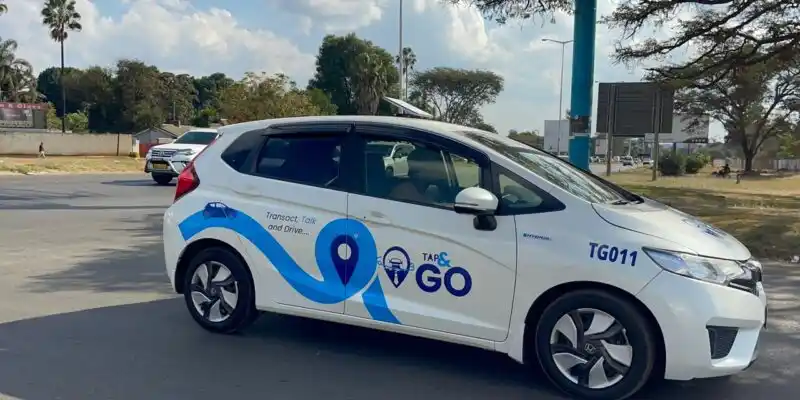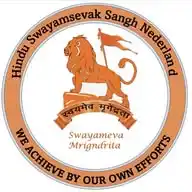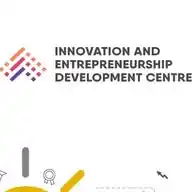
The Villaedg-E-Report
34 subscribers
About The Villaedg-E-Report
🌿 Welcome to The Villaedg-E-Report 🌿 A dynamic community committed to environmental awareness and sustainable action! --------------------------------------------------------- 🌟 *Our Mission* To drive impactful change through collaborative, eco-conscious initiatives, fostering togetherness in the spirit of Zimbabwean tradition of *Humwe/Nhimbe/iLima* and pooling resources for change. --------------------------------------------------------- 🌱 *Our Key Goals* 1. 🌳 *Reforesting the Gweru & Runde river catchment areas* 2. 🪴 *Re-greening the Midlands urban spaces* 3. 🌍 *Hosting circular events to showcase sustainable practices* 4. ♻️ *Implementing and reporting on circular transition projects* 5. 🌱 *Organizing fundraisers to aid local eco-initiatives* 6. 💪 *Providing a platform for skills training on sustainability and community development* 7. 🌿 *Promoting naturopathy, outdoor recreation, and nature-based solutions* 8. 🎬 *Creating captivating content for education, and entertainment.* --------------------------------------------------------- 🤝 *Community Engagement* We emphasize creating multiple talk forums for action, encouraging a sense of community and collaboration. Through high-quality content, stakeholder engagement, and collective action, we aim to foster thriving, regenerative communities. ---------------------------------------------------- 🌿 *Follow Us!* Be part of building a sustainable future for generations to come! ----------------------------------------------------- #earthliberatorsstories 💚 #togetherwecan
Similar Channels
Swipe to see more
Posts

*Humwe Eden ♻️: The Villaedg-E-Report* https://t.ly/QIiWO *‘Tap and Go’ Upgrades Urban Transportation in Zim* By Tari Mudahondo Dr. Paul Tungwarara’s innovative ride-hailing service, ‘Tap and Go’ is transforming urban mobility in Zimbabwe which was innovated With its user-friendly interface, faster response times, and competitive pricing, Tap and Go is quickly becoming a local favorite, overshadowing competitors like In-Drive. The platform’s seamless digital ecosystem offers real-time tracking and electronic payments, ensuring a frictionless experience for riders. Zimbabwe’s public transport system faces numerous challenges, including overcrowding, long wait times, and unreliable schedules. Tap and Go tackles these issues with an on-demand, technology-driven solution that connects passengers with drivers in seconds. This efficiency saves time and enhances the overall commuter experience. As urban populations expand, innovative transport solutions like Tap and Go promote sustainable mobility. By reducing reliance on private vehicles, the service eases traffic congestion and contributes to lower carbon emissions, building greener, more livable cities. Tap and Go stimulates local economies by creating employment opportunities for drivers, supporting local tech infrastructure growth, and attracting investment in the transportation sector. This aligns with Zimbabwe’s Vision 2030, promoting inclusive economic growth and modernization. Dr. Tungwarara’s commitment to leveraging technology for public good positions Zimbabwe at the forefront of modern, efficient, and sustainable urban mobility. With Tap and Go, Zimbabwe is taking a transformative step towards a smarter, more accessible, and economically vibrant transportation future. Dr. Paul Tungwarara’s innovative ride-hailing service, Tap and Go is transforming urban mobility in Zimbabwe which was innovated With its user-friendly interface, faster response times, and competitive pricing, Tap and Go is quickly becoming a local favorite, overshadowing competitors like In-Drive. The platform’s seamless digital ecosystem offers real-time tracking and electronic payments, ensuring a frictionless experience for riders. Zimbabwe’s public transport system faces numerous challenges, including overcrowding, long wait times, and unreliable schedules. Tap and Go tackles these issues with an on-demand, technology-driven solution that connects passengers with drivers in seconds. This efficiency saves time and enhances the overall commuter experience. As urban populations expand, innovative transport solutions like Tap and Go promote sustainable mobility. By reducing reliance on private vehicles, the service eases traffic congestion and contributes to lower carbon emissions, building greener, more livable cities. Tap and Go stimulates local economies by creating employment opportunities for drivers, supporting local tech infrastructure growth, and attracting investment in the transportation sector. This aligns with Zimbabwe’s Vision 2030, promoting inclusive economic growth and modernization. Dr. Tungwarara’s commitment to leveraging technology for public good positions Zimbabwe at the forefront of modern, efficient, and sustainable urban mobility. With Tap and Go, Zimbabwe is taking a transformative step towards a smarter, more accessible, and economically vibrant transportation future. *Humwe Eden: Villaedge Project Information Dept.* ℹ️


*Humwe Eden ♻️: The Villaedg-E-Report* https://t.ly/QIiWO 🌍 *World Environment Day: A Homage to the Unsung Hero* On this World Environment Day, as the global community rallies under the banner “Beat Plastic Pollution,” it’s important to spotlight the silent environmental stewards among us: Zimbabwe’s informal waste collectors. Often overlooked, these individuals play a pivotal role in mitigating plastic pollution, especially in urban centers like Gweru and across the Midlands Province. *The Backbone of Urban Recycling* In cities such as Gweru, informal waste collectors are a common sight—navigating streets with large bales of sorted plastics or stationed at landfills like McFadden, salvaging recyclable materials. Their daily work involves collecting, cleaning, and categorizing plastics—separating types like PET, HDPE, and LDPE—before selling them to recycling companies or intermediaries. This grassroots recycling effort not only reduces the volume of waste destined for landfills but also supplies valuable raw materials to Zimbabwe’s growing recycling industry. *Environmental and Economic Impact* Their contribution goes beyond waste reduction. By diverting plastics from landfills, they help reduce greenhouse gas emissions and prevent pollution of soil and water sources. At the same time, their efforts support the circular economy—where materials are reused and repurposed rather than discarded—lessening reliance on virgin resources. Economically, informal waste collection provides livelihoods and a sense of dignity for many. For some, it’s a way to sustain their families, generate income, and participate meaningfully in the local economy—despite the financial motivations, the environmental value of their work is undeniable. *Challenges Faced* Yet, despite their invaluable contributions, informal waste collectors often face social stigma, health risks, and lack of recognition. Many work without protective gear and in unsafe conditions, and they operate outside formal systems—meaning they don’t benefit from worker protections or social services. *What You Can Do* This World Environment Day, consider how you can make a difference: * Recognize and Respect: Treat waste pickers with dignity and appreciate the essential work they do. * Support Initiatives: When possible, back efforts that aim to improve their working conditions. * Reduce Plastic Use: Cut down on single-use plastics in your daily life. * Practice Waste Separation: Help by sorting recyclable materials from general waste at home or work. By supporting the efforts of informal waste collectors, we not only tackle plastic pollution but also promote social equity and economic inclusion within our communities. *Humwe Eden: Villaedge Project Information Dept.* ℹ️


*Humwe Eden ♻️: The Villaedg-E-Report* https://t.ly/QIiWO *Scientists prove that fish suffer "intense pain" for at least 10 minutes after catch, calls made for reforms* By Eric Ralls Earth.com staff writer Each year, more than two trillion wild and farmed fish are killed to feed humanity. Their deaths often go unnoticed. Yet beneath the surface is a simple biological fact: fish can suffer. Rainbow trout, a species farmed and consumed across the globe, experience not just death – but a prolonged and intense form of distress when killed by air asphyxiation. A new study published in the journal Scientific Reports shines a light on this pain and offers a pathway to reduce it. *Fish pain needs better measurement* Unlike environmental impact or public health, animal suffering lacks a universal metric. There are no equivalents to carbon footprints or life years lost. To address this, scientists developed the Welfare Footprint Framework (WFF). This tool measures pain in minutes, allowing researchers to compare welfare outcomes across species and conditions. The research team applied this method to trout slaughter, where air exposure is still a widely used technique. Fish, when pulled from water, begin a slow and stressful decline. Their gills collapse. They gasp in panic. Their blood chemistry spirals. Oxygen disappears while carbon dioxide builds. These biological reactions unfold as the fish continues to move, gasp, and suffer – sometimes for as long as 25 minutes. *Fish suffer up to 25 minutes* The researchers divided the trout’s suffering into four time segments. These range from alarm at removal to the final depression of brain activity before unconsciousness. Through behavioral, neurological, and pharmacological evidence, the team estimated that the average trout endures about ten minutes of pain that qualifies as hurtful, disabling, or excruciating. In some conditions, this could stretch beyond 20 minutes. When adjusted by weight, that translates to 24 minutes of such pain per kilogram (about 11 minutes per pound) of fish killed. The team used neurophysiological data like EEG signals and reflex loss to identify unconsciousness. They reviewed how fish respond to CO₂, pH imbalance, muscle exhaustion, and fear-inducing stimuli. Each pain level had specific criteria, ranging from annoyance to total disruption of basic functions. *Current methods cause painful deaths* Air asphyxiation is still legal and common in many parts of the world. But it is neither quick nor painless. Chilling in ice or using ice slurry might sound gentler, yet for cold-adapted species like trout, this method just slows down metabolism. This can delay loss of consciousness even further, compounding the suffering. Ice exposure also risks tissue damage, thermal shock, and prolonged fear. The research shows that suffering does not always begin at the point of slaughter. It often starts well before. Crowding, transport, and handling all add to the fish’s cumulative pain. These pre-slaughter stressors can cause physical injury and hours of distress. Yet, regulations usually overlook them. *Stunning can help fish suffer less* The study evaluated two types of stunning: electrical and percussive. Electrical stunning, if properly used, could spare 60 to 1,200 minutes of suffering for every dollar spent. This makes it one of the most cost-effective welfare interventions known. But implementation remains inconsistent. In many commercial settings, electrical stunning fails to reliably render fish unconscious. Poor placement of electrodes, inadequate voltage, or faulty machines may undermine the potential benefits. Percussive stunning – a physical blow to the head – has shown better consistency in lab settings. But it’s difficult to scale. Fish vary in size. Equipment must be precisely calibrated. Worker fatigue also reduces effectiveness. Any slip means the fish remains conscious while bleeding out. *A new language for animal pain* What makes the Welfare Footprint Framework powerful is its transparency. Instead of assigning a fixed label to pain, it works with probabilities. If scientists believe there’s a 40% chance the pain is disabling and a 40% chance it is excruciating, the framework includes both. This makes the model flexible and more reflective of real-world uncertainty. Pain, like emotion, varies between individuals. Some fish may suffer more than others, even under identical conditions. “The Welfare Footprint Framework provides a rigorous and transparent evidence-based approach to measuring animal welfare, and enables informed decisions about where to allocate resources for the greatest impact,” noted Dr. Wladimir Alonso from Welfare Footprint Institute. This approach mirrors models used in public health or environmental science. Just like life years lost to disease, we can now talk about minutes of suffering saved. *Implications for policies and people* Fish slaughter occupies only minutes in an animal’s life – but these minutes can be extremely painful. Compared to long-term reforms on farms, slaughter improvements are easier to implement and affect billions of lives. The study’s authors argue that investing in better stunning tools and training workers can provide enormous welfare gains. For policy makers, this research offers a scientific foundation to reform outdated practices. Certification schemes can set minimum stunning effectiveness based on real pain data. Governments can use this to guide humane slaughter laws. For consumers, it gives a new way to think about what ends up on their plate. *Other fish suffer too* Though this study focused on rainbow trout, the underlying stress pathways – oxygen deprivation, acidosis, metabolic failure – are common across fish species. That means the Welfare Footprint Framework can be adapted. Salmon, catfish, seabass, tilapia – they all may suffer in similar ways during air exposure. However, each species will need specific data. Some tolerate low oxygen better. Others may react more strongly to ice. Future research must expand to include this diversity. *A turning point for aquatic welfare* The world is just beginning to reckon with the sentience of fish. For decades, their pain was denied or ignored. But science no longer allows that. With trillions of fish slaughtered every year, even small improvements can have vast impact. The WFF doesn’t just measure pain. It opens a language of empathy grounded in evidence. It lets regulators, producers, and consumers weigh the cost of change. And perhaps, most importantly, the framework acknowledges what fish have felt all along – suffering that deserves to be seen and reduced. The study is published in the journal Scientific Reports. *Humwe Eden: Villaedge Project Information Dept.* ℹ️














